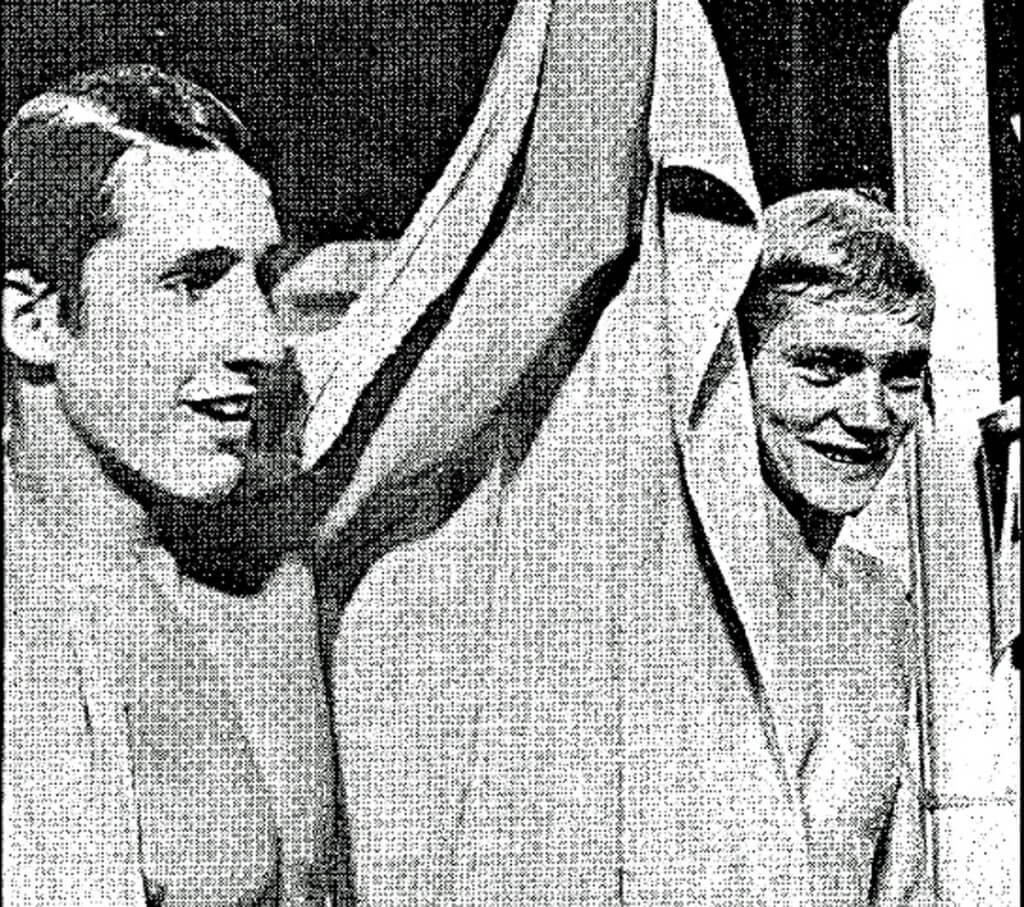Rick DeMont Finds Redemption At 1973 Worlds With First Sub-4:00 In 400 Free

Coverage of the 2015 FINA World Championships is sponsored by Wylas Timing. Visit our coverage page for more.
Pre-coverage of the World Championships is sponsored by Wylas Timing. Each week until the start of the swimming competition at the world championships, Swimming World will look back at a previous performance at the world championships that still carries significance.
By Jeff Commings, Swimming World Senior Writer
The first world championships were held in 1973 in Belgrade, in the former Yugoslavia. This meeting of the world’s best aquatic sports athletes came with a lot of questions. Would the athletes be ready for high-intensity racing a year after the Olympics? Would we see new names emerge from the crowd? And who will become the biggest star?
In answering the last question, Rick DeMont did his best to etch his name in swimming lore with one of the he best tragedy-to-triumph performances in history. DeMont stepped onto the blocks in the final of the 400 free in Belgrade one year after having his Olympic dream stripped away, and left the meet as one of the sport’s biggest pioneers.
At the 1972 Olympics in Munich, DeMont touched the wall first in the 400 freestyle, beating Australian Brad Cooper by one hundredth of a second. The 16-year-old stood on the medal podium wearing a gold medal around his neck and heard the U.S. national anthem. It was the start of what could have been a very successful Olympics for DeMont, but shortly before the final of the 1500 freestyle, officials detailed that DeMont’s urine contained the banned substance ephedrine.
DeMont had declared that he was using the drug as part of his asthma medication, but the paperwork had not been adequately filed with the International Olympic Committee. Appeals were not successful, and DeMont’s gold medal was returned and he was not allowed to swim in the 1500 free in Munich.
The world championships in 1973 would give DeMont an opportunity to redeem himself. It also gave him another chance to break the elusive four-minute barrier, which he missed by 27 hundredths of a second in Munich. Kurt Krumpholz’s world record of 4:00.11 would be in serious jeopardy, with DeMont and Cooper set to race in the final.
The two contenders weren’t in the lead after 100 meters, but by the halfway point, they had begun to separate themselves from the pack, with Sweden’s Bengt Ginsjoe just a few tenths behind. Cooper split 1:59.52, while DeMont was right behind in 2:00.13. At this point, most would think a sub-4:00 swim was impossible, but DeMont and Cooper were famous for their negative-split swims at the 1972 Olympics. In 1973, they were faster at 200 meters, and this meant history was about to be made.
Cooper was still in front at the 300-meter mark, but only by 15 hundredths over DeMont. The next 50 meters saw a big surge from DeMont, and Cooper tried to rally in the final 50 meters. The result was an astounding time on the scoreboard for DeMont: 3:58.18. Cooper wasn’t too far behind with a 3:58.70.
DeMont and Cooper were amazing on the final 100 meters, with DeMont splitting 58.18 to Cooper’s 58.85. It was the third 100 meters, though, that set them up for the historic swim, as the two split in the 59-second range at a moment in the race when no one else could crack one minute.
Most barrier-breaking swims are not easy to beat. Some take nearly a decade to overcome. It took Tim Shaw just one year to not only get under the 4:00 barrier, but smash through it with a 3:56.96 at the USA Swimming nationals in August 1974. Shaw had been a part of the historic 400 free final at the 1973 worlds, finishing fourth with a 4:01.56. In one year, he sliced five seconds off his lifetime best to become the new king of the 400 free – until he was succeeded by Brian Goodell at the 1976 Olympic Trials.
The International Olympic Committee has admitted that it should have handled DeMont’s situation better in 1972, but has stopped short of changing the results to put his name in the gold medal column. If the lasting legacy in DeMont’s career – which now includes a head coaching stint at the University of Arizona and an assistant coach for this year’s U.S. world championship team – is breaking the 4:00 barrier, it’s an accomplishment that stands unequivocally as the best world championship performance in history.





Brad, I swam next to Rick DeMont at the 1975 NCAA’s in Cleveland. He nipped me by a few tenths.